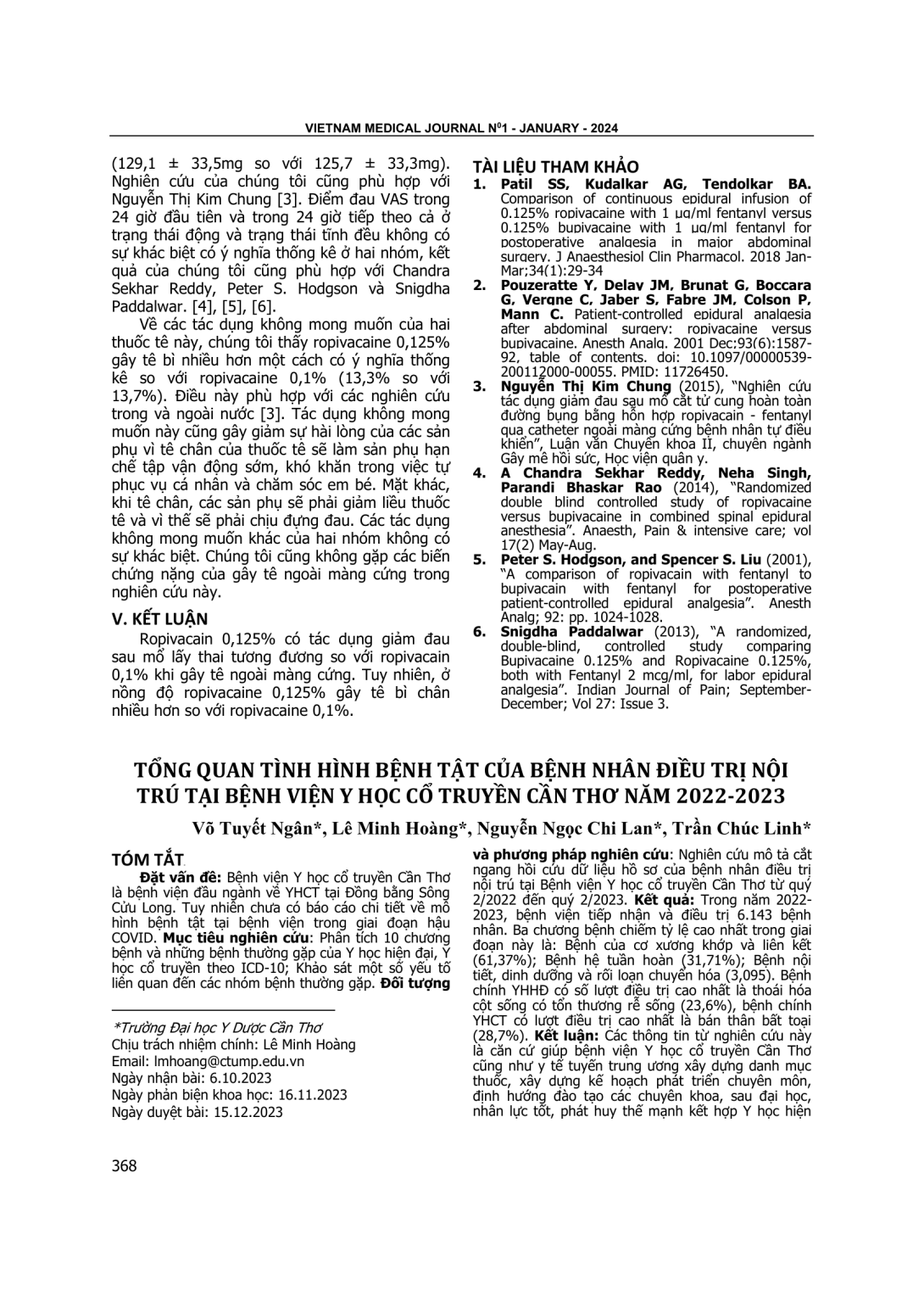
Phân tích 10 chương bệnh và những bệnh thường gặp của Y học hiện đại, Y học cổ truyền theo ICD-10; Khảo sát một số yếu tố liên quan đến các nhóm bệnh thường gặp. Đối tượng và phương pháp nghiên cứu: Nghiên cứu mô tả cắt ngang hồi cứu dữ liệu hồ sơ của bệnh nhân điều trị nội trú tại Bệnh viện Y học cổ truyền Cần Thơ từ quý 2/2022 đến quý 2/2023. Kết quả: Trong năm 2022-2023, bệnh viện tiếp nhận và điều trị 6.143 bệnh nhân. Ba chương bệnh chiếm tỷ lệ cao nhất trong giai đoạn này là: Bệnh của cơ xương khớp và liên kết (61,37%); Bệnh hệ tuần hoàn (31,71%); Bệnh nội tiết, dinh dưỡng và rối loạn chuyển hóa (3,095). Bệnh chính YHHĐ có số lượt điều trị cao nhất là thoái hóa cột sống có tổn thương rễ sống (23,6%), bệnh chính YHCT có lượt điều trị cao nhất là bán thân bất toại (28,7%). Kết luận: Các thông tin từ nghiên cứu này là căn cứ giúp bệnh viện Y học cổ truyền Cần Thơ cũng như y tế tuyến trung ương xây dựng danh mục thuốc, xây dựng kế hoạch phát triển chuyên môn, định hướng đào tạo các chuyên khoa, sau đại học, nhân lực tốt, phát huy thế mạnh kết hợp Y học hiện đại và Y học cổ truyền trong phục vụ cho công tác khám chữa bệnh cho tầng lớp nhân dân.
The objective is to analyze 10 disease categories and common diseases in both Western Medicine and Traditional Medicine, according to ICD-10, and to survey some factors related to common disease groups. Materials and Methods: A retrospective cross-sectional descriptive study of inpatient record data at Can Tho Traditional Medicine Hospital from Q2/2022 to Q2/2023. Results: In 2022-2023, the hospital received and treated 6,143 patients. The three diseases with the highest proportion during this period are Musculoskeletal and Rheumatology diseases (61.37%), Circulatory system diseases (31.71%), and Endocrine, Nutritional, and Metabolic disorders (3,095). The primary disease in Western Medicine with the highest number of treatments is spine degeneration with spinal root damage (23.6%), and the main disease in Traditional Medicine with the highest number of treatments is hemiplegia (28.7%). Conclusion: The information from this study serves as a basis to help Can Tho Traditional Medicine Hospital and central healthcare organizations develop a drug list, professional development plan, and orientation for the training of specialties and post-graduates with good human resources. This promotes the strengths of combining Western Medicine and Traditional Medicine in providing medical examination and treatment for the people.
- Đăng nhập để gửi ý kiến
